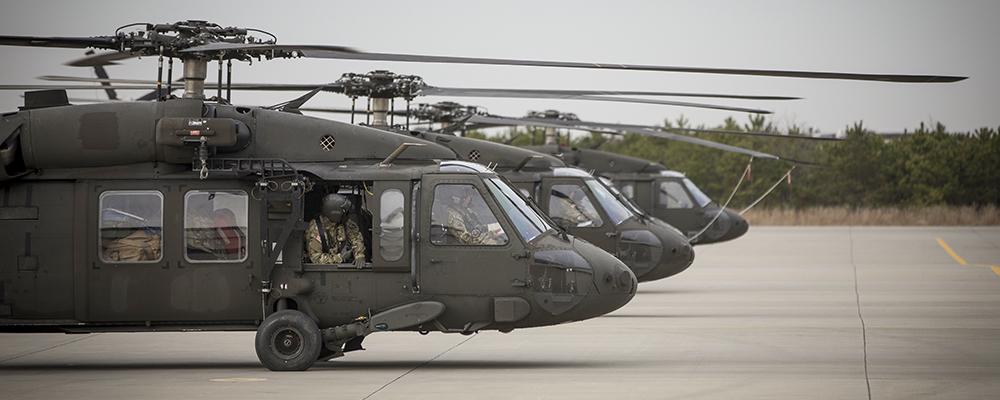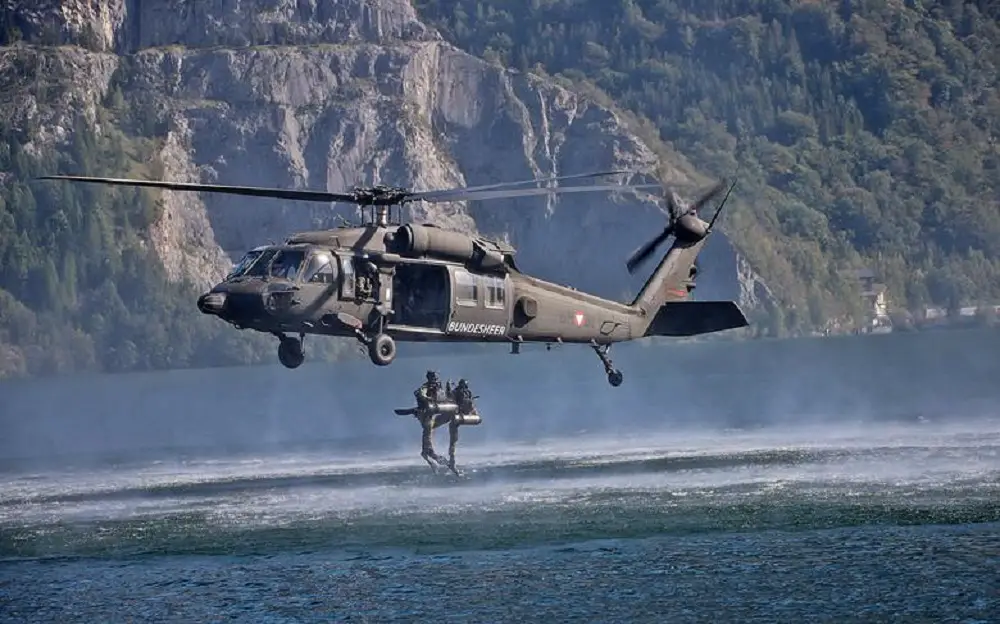The Role of the UH 60 in Combat Zones: Enhancing Mobility and Operational Efficiency
The Role of the UH 60 in Combat Zones: Enhancing Mobility and Operational Efficiency
Blog Article
Discovering the Background and Advancement of the UH 60 Helicopter

Origins of the UH-60
The origins of the UH-60 helicopter can be mapped back to the late 1960s, a period noted by the demand for a flexible utility airplane that might adapt to the evolving needs of contemporary war. The U.S. Military acknowledged the need for a substitute for the older UH-1 Iroquois, which was coming to be increasingly inadequate for the complexities of contemporary combat scenarios. In 1967, the Army initiated the Utility Tactical Transportation Airplane System (UTTAS) program, which looked for to create a multi-role helicopter with the ability of various missions, including troop transport, medical emptying, and logistical assistance.
The design competitors attracted a number of aerospace manufacturers, however it was Sikorsky Aircraft Corporation that inevitably secured the agreement in 1972. The UH-60 Black Hawk was presented, showcasing ingenious layout aspects and progressed technology that set it apart from its precursors. Its initial flight occurred in 1974, and the aircraft was formally embraced by the Army in 1979. The UH-60 quickly obtained acknowledgment for its robust efficiency, dependability, and versatility, paving the way for its extensive usage in army procedures and solidifying its status as a keystone of united state Army air travel.
Secret Design Attributes
Innovative design features of the UH-60 Black Hawk substantially add to its functional performance. One of one of the most noteworthy elements is its twin-engine setup, which improves reliability and provides a greater power-to-weight ratio, allowing the helicopter to execute under different problems. The aircraft's four-blade primary rotor system uses enhanced lift and ability to move, important for tactical goals.

Additionally, the cockpit is designed for optimal visibility and comfort designs, including advanced avionics that enhance pilot procedures. The modular style of the UH-60 enables very easy upkeep and adaptability, making it suitable for various objective accounts, from army transport to medevac operations. These vital style attributes make sure that the UH-60 Black Hawk remains a trustworthy and versatile asset in armed forces aeronautics, qualified of meeting the needs of modern-day warfare.
Technological Innovations
Current technical advancements in the UH-60 Black Hawk have actually dramatically enhanced its operational capacities and adaptability. The assimilation of sophisticated avionics, such as electronic flight control systems and improved situational recognition displays, enables pilots to operate with boosted precision and efficiency. These systems promote boosted navigating, communication, and information sharing, enabling the helicopter see page to function effectively in diverse atmospheres.
In addition, the intro of composite products has actually decreased the overall weight of the aircraft while maintaining architectural honesty. This decrease boosts gas performance and expands operational array. The consolidation of sophisticated blades modern technology, including using four-blade, completely articulated rotor systems, has boosted lift efficiency and maneuverability, enabling much better handling in various flight conditions.

In addition, developments in propulsion systems, such as the T700-GE-701D engines, have actually increased power outcome and integrity - uh 60. These engines add to remarkable efficiency in hot-weather and high-altitude problems
Last but not least, the assimilation of self-defense systems and boosted sensing unit bundles enhances the Black Hawk's survivability and mission performance. Jointly, these technical enhancements make certain that the UH-60 Black Hawk remains a crucial asset in contemporary air travel, efficient in adjusting to the evolving demands of humanitarian and army missions.
Role in Military Workflow
As the foundation of united state Military air travel, the UH-60 helicopter plays an important function in different military operations, working as a functional system for fight assistance, transportation, and medevac objectives - uh 60. Its design incorporates the capability to operate in diverse settings, making it crucial for troop motion and logistical assistance in both non-traditional and standard warfare

In clinical emptying situations, the UH-60 has proven indispensable, substantially minimizing the time to transfer injured soldiers from the battleground to medical facilities. Its sophisticated avionics and night vision capabilities better ensure objective success under tough conditions. In general, the UH-60 helicopter stays a vital possession, constantly adapting to meet the evolving needs of army procedures and boosting the effectiveness of U.S. forces worldwide.
Future of the UH-60
Looking ahead, the future of the UH-60 helicopter involves significant advancements in modern technology and capacities created to enhance see this here its operational performance. As armed forces operations develop, the UH-60 is anticipated to integrate advanced modern technologies, including enhanced avionics, boosted weapons systems, and progressed communication tools. These improvements will certainly enable for greater situational understanding and mission versatility, guaranteeing that the UH-60 continues to be a crucial asset on the combat zone.
One significant development is the combination of fly-by-wire systems, which will improve trip control accuracy and decrease pilot work. Additionally, initiatives to update the airframe and engines aim to increase payload, range, and speed ability, thereby expanding the helicopter's functional scope (uh 60).
The future also holds pledge for enhanced interoperability with unmanned airborne systems (UAS), enabling coordinated goals that leverage both manned and unmanned capabilities. In addition, the unification of synthetic knowledge and artificial intelligence could maximize flight characteristics and maintenance processes, causing minimized functional prices.
Verdict
The UH-60 Black Hawk helicopter stands for a considerable accomplishment in military air travel, advancing from the united state Military's initial demands for a flexible energy airplane. Its innovative design functions and constant technological improvements have actually ensured its significance in numerous army procedures over the years. As the demands of modern-day warfare modification, the future of the UH-60 will likely involve further improvements and adjustments, strengthening its standing as a crucial property for militaries worldwide.
The UH-60 Black Hawk helicopter represents a substantial milestone in armed forces aeronautics, emerging from the U.S. Army's quest for a more functional and dependable utility aircraft in the late 20th century.The origins of the UH-60 helicopter can be mapped back to the late 1960s, a duration noted by the demand for a flexible energy aircraft that could adjust to the evolving demands of contemporary warfare. In general, the UH-60 helicopter continues to be an essential property, continually adapting to meet the progressing needs of army procedures and enhancing the efficiency of U.S. forces worldwide.
Looking in advance, the future of the UH-60 helicopter includes significant innovations in technology and abilities developed to boost its operational performance.The UH-60 Black Hawk helicopter stands for a significant accomplishment in military air sites travel, evolving from the U.S. Military's preliminary demands for a functional utility airplane.
Report this page